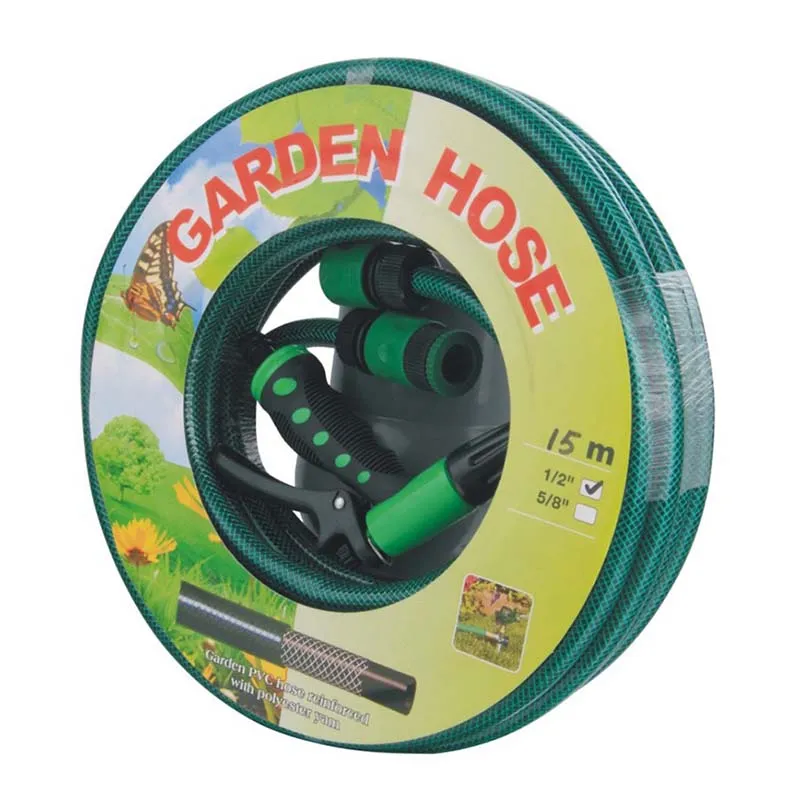فېۋرال . 04, 2025 05:01
Back to list
PVC Oxy Acetylene Twin Welding Hose
The world of welding and metal fabrication is one where precision, safety, and efficiency are paramount. At the heart of many welding operations is the oxy acetylene twin hose, a crucial component that delivers the meticulous control and reliability needed for successful metalworking tasks. Understanding the importance of this equipment, and how to choose the right one for your needs, is essential for professionals committed to excellence.
Safety standards and certifications provide a level of assurance in the reliability of oxy acetylene twin hoses. Leading products often conform to standards such as the ISO 3821, which specifies requirements for rubber hoses for welding, cutting, and allied processes. Ensuring that your equipment meets these standards carries not only the promise of quality and reliability but also adherence to international safety norms. Routine maintenance and regular inspections of your oxy acetylene twin hose are essential practices that contribute to safety and performance. Checking for signs of wear, such as cracks, abrasions, or leaks, can help address potential issues before they lead to hazardous situations. Implementing a regular replacement schedule based on manufacturer recommendations will keep operations running smoothly and safely. Choosing the right vendor also plays a significant role in the reliability of the equipment. Reputable vendors adhere to stringent quality control measures and provide reliable customer support, ensuring that any issues can be swiftly addressed. Investing in a good quality hose from a trusted supplier helps safeguard against accidents and ensures efficient workflow. With the precision required in welding and cutting tasks, having a high-quality oxy acetylene twin hose is non-negotiable. By understanding the nuances of different grades, sizes, and safety standards, professionals can make informed choices that enhance their workmanship and ensure safer operations. As the bridge between gas cylinders and the torch lies a piece of equipment that too often goes unrecognized—yet its importance cannot be understated.


Safety standards and certifications provide a level of assurance in the reliability of oxy acetylene twin hoses. Leading products often conform to standards such as the ISO 3821, which specifies requirements for rubber hoses for welding, cutting, and allied processes. Ensuring that your equipment meets these standards carries not only the promise of quality and reliability but also adherence to international safety norms. Routine maintenance and regular inspections of your oxy acetylene twin hose are essential practices that contribute to safety and performance. Checking for signs of wear, such as cracks, abrasions, or leaks, can help address potential issues before they lead to hazardous situations. Implementing a regular replacement schedule based on manufacturer recommendations will keep operations running smoothly and safely. Choosing the right vendor also plays a significant role in the reliability of the equipment. Reputable vendors adhere to stringent quality control measures and provide reliable customer support, ensuring that any issues can be swiftly addressed. Investing in a good quality hose from a trusted supplier helps safeguard against accidents and ensures efficient workflow. With the precision required in welding and cutting tasks, having a high-quality oxy acetylene twin hose is non-negotiable. By understanding the nuances of different grades, sizes, and safety standards, professionals can make informed choices that enhance their workmanship and ensure safer operations. As the bridge between gas cylinders and the torch lies a piece of equipment that too often goes unrecognized—yet its importance cannot be understated.
Latest news
-
Top Quality Oxy Acetylene Hoses for Sale Fit for Welding DemandsNewsJul.28,2025
-
The Future of Pneumatic Air Tubes in IndustryNewsJul.28,2025
-
Superior and Reliable LPG Hose Pipe Solutions for Every NeedNewsJul.28,2025
-
Exceptionally Durable and Versatile Premium Braided PVC TubingNewsJul.28,2025
-
Best Adapters for Connecting Garden Hose to PVC Pipe ConnectionsNewsJul.28,2025
-
The Essential Role of LPG Hoses in Safe and Efficient Gas DistributionNewsJul.16,2025
HOT PRODUCT
Provide You The Highest Quality Work
INQUIRE














